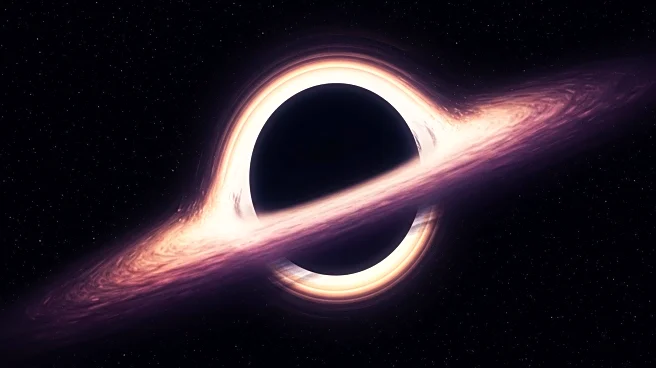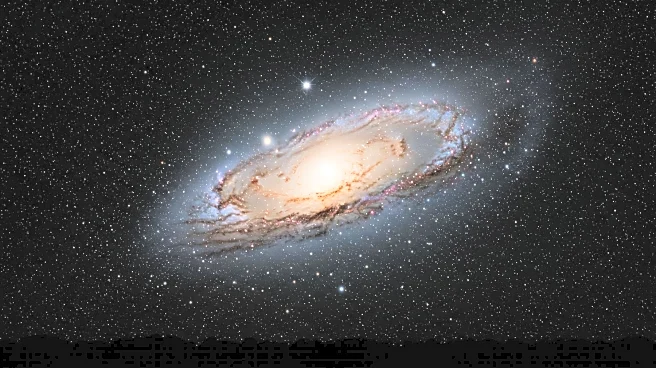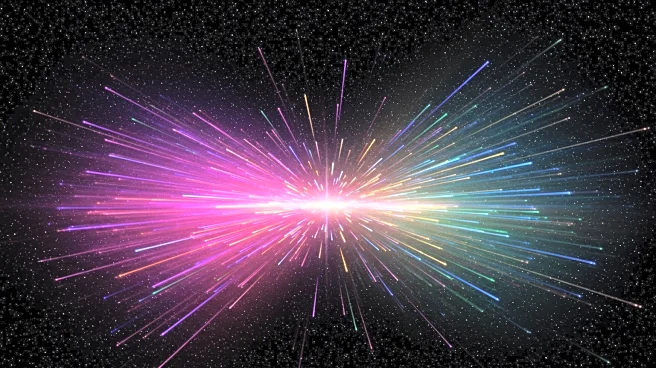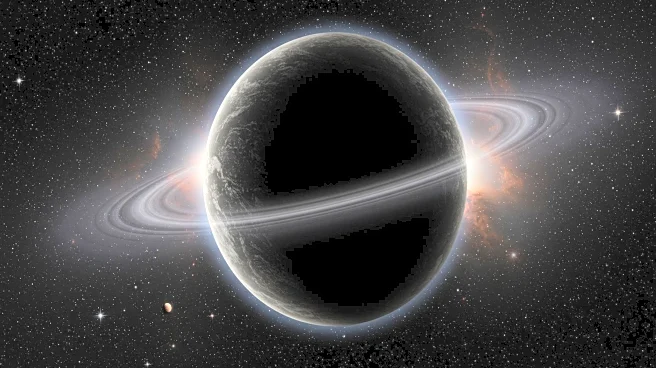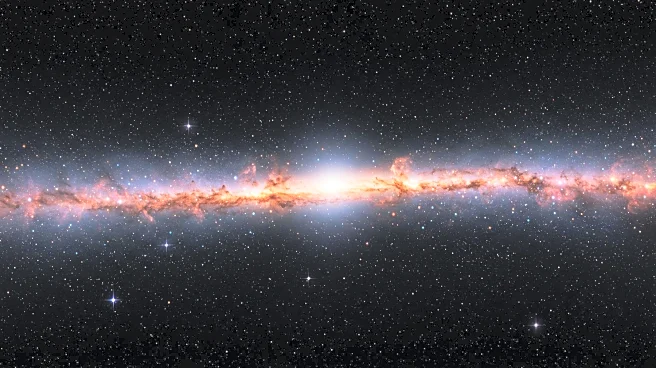Rapid Read • 7 min read
Astronomers have observed a supermassive black hole in the galaxy cluster CHIPS 1911+4455, located approximately 6 billion light-years from Earth, as it begins its active phase. Using the Very Long Baseline Array (VLBA) and the Very Large Array (VLA), researchers have captured the black hole's jets, which are only about 30 parsecs long, indicating the black hole has just started consuming material and launching jets. This rare observation provides insights into the early stages of black hole activity and its role in galaxy evolution. The study, led by Francesco Ubertosi from the University of Bologna and the National Institute for Astrophysics in Italy, highlights the conditions before the black hole significantly impacts its environment.
AD
The discovery is significant as it offers a unique opportunity to study the initial stages of black hole feedback, a process crucial for regulating star formation in massive galaxies. Understanding how supermassive black holes influence their surroundings can help solve longstanding puzzles about galaxy evolution. The galaxy surrounding the black hole is already forming stars at an exceptional rate, suggesting a link between black hole activity and star formation. This research could lead to new theories about how black holes and galaxies co-evolve, providing a deeper understanding of cosmic structures.
Researchers plan to continue monitoring the CHIPS 1911+4455 cluster to observe how the young black hole evolves over time. They aim to identify more similar systems to build a larger sample of pre-feedback clusters, which could further illuminate the processes involved in black hole feedback. The study represents a step toward understanding how supermassive black holes regulate star formation and influence galaxy development.
AD
More Stories You Might Enjoy
